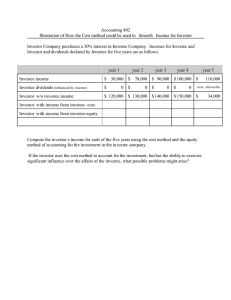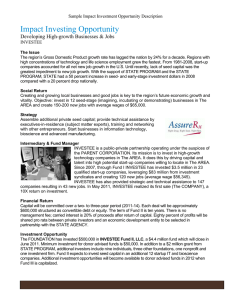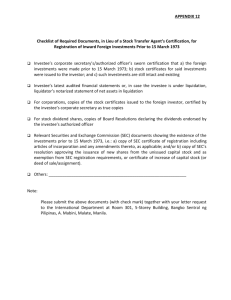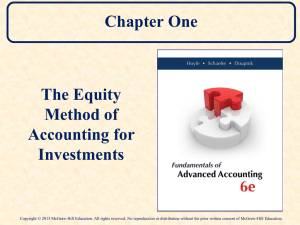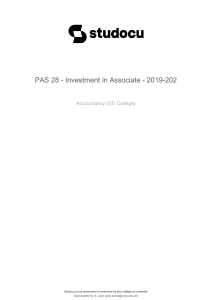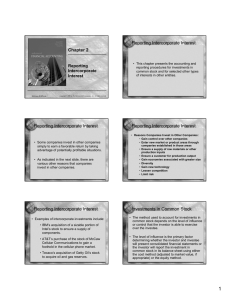Investments_IFRS
advertisement
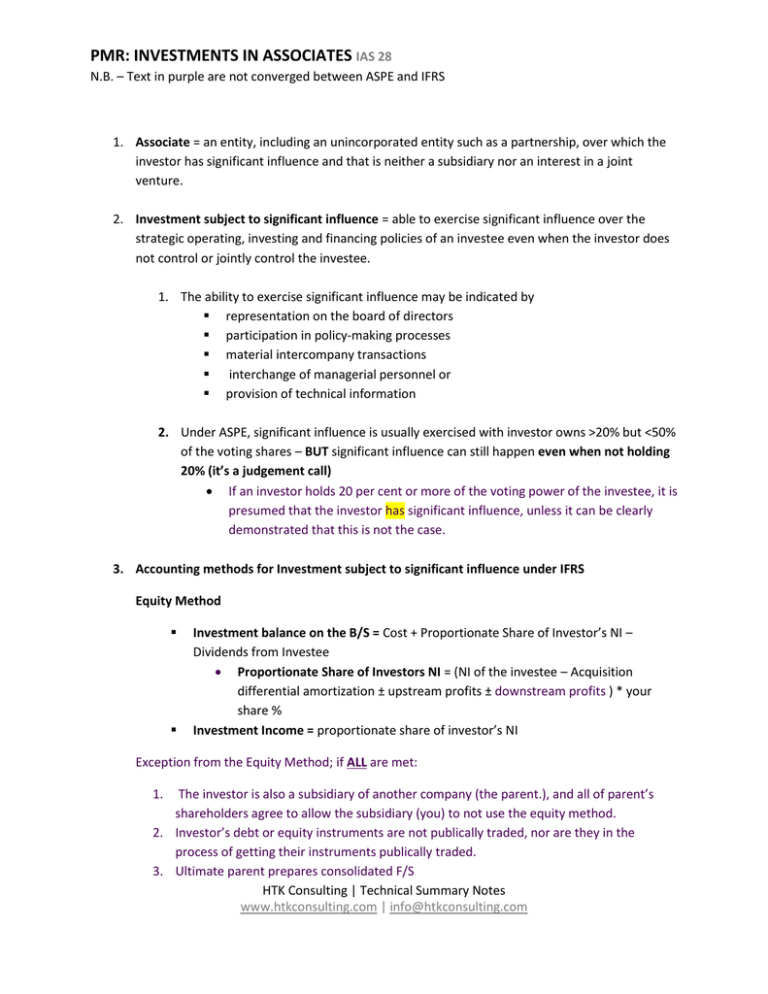
PMR: INVESTMENTS IN ASSOCIATES IAS 28 N.B. – Text in purple are not converged between ASPE and IFRS 1. Associate = an entity, including an unincorporated entity such as a partnership, over which the investor has significant influence and that is neither a subsidiary nor an interest in a joint venture. 2. Investment subject to significant influence = able to exercise significant influence over the strategic operating, investing and financing policies of an investee even when the investor does not control or jointly control the investee. 1. The ability to exercise significant influence may be indicated by representation on the board of directors participation in policy-making processes material intercompany transactions interchange of managerial personnel or provision of technical information 2. Under ASPE, significant influence is usually exercised with investor owns >20% but <50% of the voting shares – BUT significant influence can still happen even when not holding 20% (it’s a judgement call) If an investor holds 20 per cent or more of the voting power of the investee, it is presumed that the investor has significant influence, unless it can be clearly demonstrated that this is not the case. 3. Accounting methods for Investment subject to significant influence under IFRS Equity Method Investment balance on the B/S = Cost + Proportionate Share of Investor’s NI – Dividends from Investee Proportionate Share of Investors NI = (NI of the investee – Acquisition differential amortization ± upstream profits ± downstream profits ) * your share % Investment Income = proportionate share of investor’s NI Exception from the Equity Method; if ALL are met: 1. The investor is also a subsidiary of another company (the parent.), and all of parent’s shareholders agree to allow the subsidiary (you) to not use the equity method. 2. Investor’s debt or equity instruments are not publically traded, nor are they in the process of getting their instruments publically traded. 3. Ultimate parent prepares consolidated F/S HTK Consulting | Technical Summary Notes www.htkconsulting.com | info@htkconsulting.com PMR: INVESTMENTS IN ASSOCIATES IAS 28 N.B. – Text in purple are not converged between ASPE and IFRS If all these three criteria are met, you would then use the Financial Instruments section to account for these investments (IAS 32/39) 2. What happens if losses in the investee’s books grind down the investment account to below zero (i.e. causes a negative investment account balance)? An investor's share of losses in excess of the carrying amount of the investment shall be recorded (as a liability) if: o the investor has guaranteed the obligations of the investee; or o investor is committed to provide further financial support to the investee; or o The investee seems assured of imminently returning to profitability. If these above criteria are not met; you show the investment at $0 and disclose the losses; and when the investment recovers to an amount above the accumulated losses, then only do you start showing a balance in investments in the B/S. 3. Impairment of an Investment Use IAS 39 (financial instruments: recognition and measurement) to determine whether it is necessary to recognise any additional impairment loss. If so you need to write down the investment to: o The higher of Value in Use = PV of the future cash flows from holding this investment FV less cost to sell 4. Under IFRS the nature of the gains/losses stays the same; for example if you picked up gains in OCI from the investee; you also need to show this income under OCI and not under NI. Major Differences between ASPE/IFRS - ASPE allows cost or equity method Impairment testing is different HTK Consulting | Technical Summary Notes www.htkconsulting.com | info@htkconsulting.com
